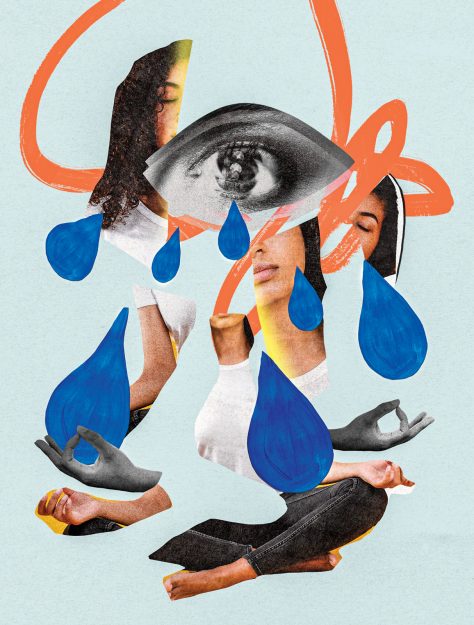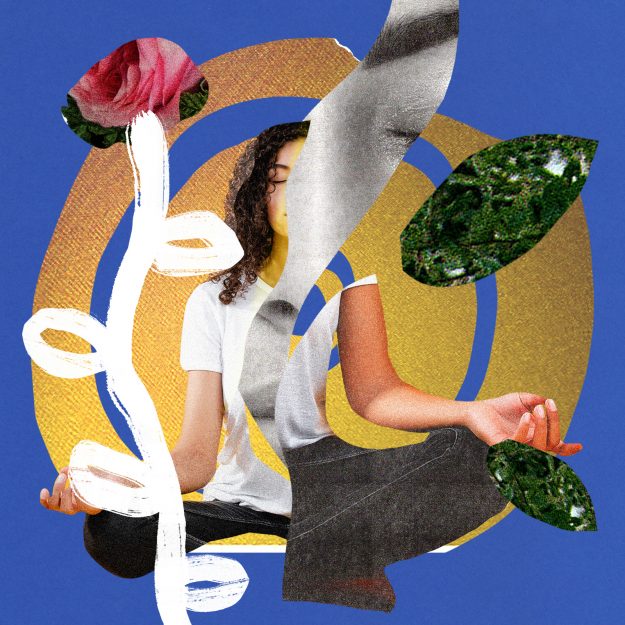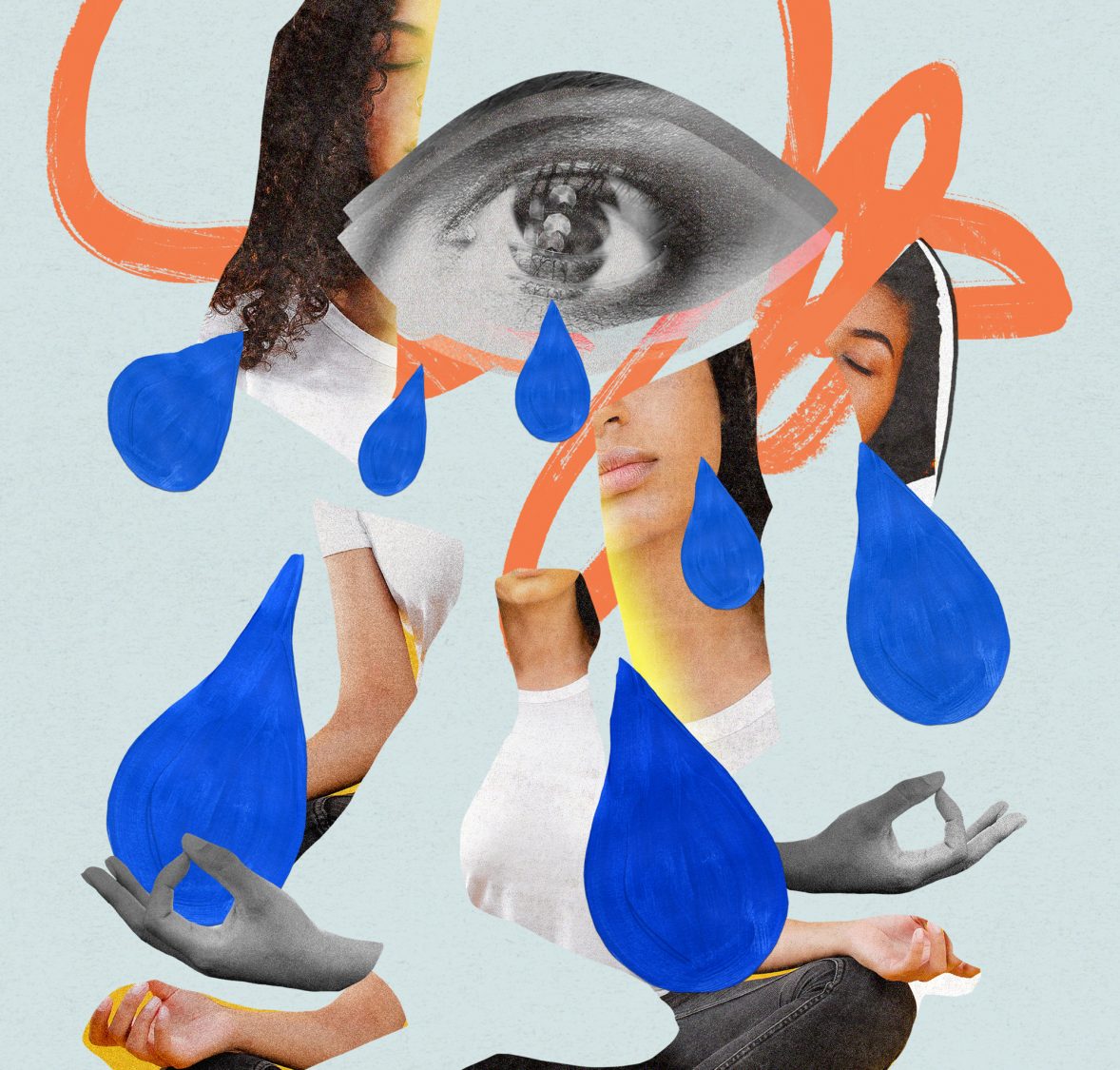I began moping around in a dark, melancholy state. I was always nervous and afraid, weak and timid in mind and body. The skin under my arms was constantly wet with perspiration. I found it impossible to concentrate on what I was doing. I sought out dark places where I could go to be alone and just sat there motionless like a dead man. Neither acupuncture, moxacautery [burning dried flowers on or near the skin], nor medical potions brought me any relief.
These are the words of Hakuin Ekaku (1685–1768), a Japanese monk who would eventually become a central figure in the Rinzai tradition. But to judge from his words above, he is a monk with a very big problem. This problem—meditation sickness—takes him on a quest, and he crisscrosses Japan to meet with Zen teachers who he hopes will be able to help him. They can’t really, telling Hakuin either that there is nothing to be done or that diligently practicing zazen (seated meditation) in a secluded place will bring him out of it.
This journey, which Hakuin recounts in his spiritual autobiography, Wild Ivy (trans. Norman Waddell), is filled with experiences of satori (sudden enlightenment), where he finds himself laughing and crying at the same time, covered in mud, and branded a “crazy monk” by passersby. He meditates for seven days and seven nights without sleep. Eventually, Hakuin finds Master Hakuyu, who explains that the fire in Hakuin’s heart has traveled up his body. To bring this fire down, the master prescribes the “soft butter method.”
Master Hakuyu instructs Hakuin to envision a small lump of butter on the top of his head, melting down to the lower body, healing all the areas that are out of whack. Hakuin leaves the master after this instruction and later writes that he devoted the next three years to this practice, which he calls Introspective Meditation. The condition cleared up entirely, and the problems never returned.
Zen is far from the only Buddhist tradition with old texts that address difficulties in meditation. Tibetan traditions refer to “retreat rlung,” or “meditator’s disease.” (Rlung is the Tibetan word for the element of wind or air and by extension refers to diseases of wind imbalance.) In a 2004 article on the Foundation for the Preservation of the Mahayana Tradition website, Venerable Lhundup Nyingje writes that nearly every meditator experiences this imbalance, which can be compared to a strained muscle and can lead to agitation, anxiety, panic attacks, depression, headaches, chest or back pain, and other physical reactions such as diarrhea or indigestion. If left untreated, meditator’s disease can even lead to a practitioner’s becoming “severely mentally disturbed,” according to Nyingje. However, the Pali canon, the central body of texts of the Theravada tradition, doesn’t have much to say about these sorts of difficulties, according to the scholar and monk Venerable Bhikkhu Bodhi. “It is puzzling that they are passed over,” he said, pointing by contrast to the Vesali Sutta (Samyutta Nikaya 54.9), in which dozens of misguided monks kill themselves after the Buddha gives a talk on the unattractiveness of the body.
Researchers looking at this problem today say that we have to acknowledge the adverse effects of practice, one of Buddhism’s biggest open secrets. From a scientific perspective, we’re still in the early decades of beginning to understand that meditation is not a cure-all—and that the instruction to practice more, as Hakuin was told by many a Zen master, has the potential to cause more harm than good, particularly among those who have experienced trauma. While information about meditation sickness is becoming more widely available, practitioners are left with the question of what to do about it, and teachers and dharma centers who are aware of the issue have been trying to figure out how they can better prepare students who might encounter difficulties.

Daniel Lawton, a Mindfulness-based Stress Reduction (MBSR) teacher from New Orleans, doesn’t meditate anymore. He’s also a rare exception in that he’s an instructor who speaks openly about the negative side effects of meditation he experienced.
Lawton had already experienced dissociation and a lost sense of agency before he went on a jhana retreat in 2019. By his count, he had previously sat about 15 retreats and logged countless hours in meditation. But it was what he calls that “traumatic retreat” that led to PTSD and lasting effects that are still with him today.
“I’m just constantly and acutely aware of my thoughts, my emotions, my sensory experiences, in a way that often feels disaggregated. The borders and boundaries around my sense of self are very permeable at times,” Lawton said. “There’s this idea that you’re going to dissolve the boundary between you and the rest of the world and you’re not going to have any anxiety or something. That has not been my experience whatsoever. Intensive meditation has to some extent changed the way that I experience the world, and some of those perceptual changes just don’t feel very good.”
Lawton, who published an essay on Substack in July 2021 about his experience, said that he was in a state of “terror, panic, and paranoia” for hours. He recounted feeling as though his body were trying to leap out of its skin. The morning after the episode, he found himself paralyzed in moments, unable to move. The teachers leading the retreat responded compassionately, Lawton said, and likely did as much as they were able when responsible for 40 other people in their care. They suggested he take a day off from practice; Lawton ultimately decided to leave, taking a car service from the remote mountain retreat center to his sister’s house 90 minutes away. After the retreat he struggled with involuntary movements and an inability to identify the boundary between himself and other objects.
Lawton said he felt morally obligated to share his story. “So many people who are coming to intensive practice . . . have no expectation that this could happen to them,” Lawton said. “There needs to be a real call to action, especially within communities that pride themselves in doing no harm and being compassionate.”
Lawton, who continues to teach MBSR, tells his students there can be negative side effects to meditation and asks them to talk to him if anxiety or other difficulties arise so that they can be addressed. He also believes retreats should have a psychologist or psychiatrist on call to address meditators in distress.
Post-retreat, Lawton himself has found support through Cheetah House, a nonprofit organization started by Dr. Willoughby Britton, an associate professor and co-director of the Clinical and Affective Neuroscience Laboratory at Brown University. Britton is the leading researcher on adverse effects of meditation, and Cheetah House supports meditators in distress and provides meditation safety training to teachers and organizations.
In 2017, Britton and four other coauthors published a study called “The Varieties of Contemplative Experience: A mixed-methods study of meditation-related challenges in Western Buddhists.” The paper identified 59 different types of adverse effects experienced by Buddhist practitioners ranging from distressing to debilitating (significantly, none of the practitioners in the study had a history of mental health disorders). Britton said the Cheetah House has been busy ever since; in late July she reported that she was booked for consultations until 2022, and that their website was receiving about six thousand visits a month. This year Britton was also a coauthor of a paper, “Prevalence of meditation-related adverse effects in a population-based sample in the United States”; of the 953 participants, half reported “at least one clinically relevant symptom, with anxiety, traumatic re-experiencing, and emotional sensitivity appearing most commonly.”
Ira Helderman, a psychotherapist and religious studies scholar and the author of Prescribing the Dharma: Psychotherapists, Buddhist Traditions, and Defining Religion and a forthcoming book on the topic, said it was “very difficult” to determine how prevalent these adverse effects have been throughout history.
“The stories from Buddhist traditions typically associated with US convert meditators’ experiences today were often meant in part to convey the unique and exceptional power of particular ideas and practices,” Helderman noted.
When asked about meditation difficulties and historical context, Helderman points to the transpersonal and humanistic clinicians of the 1960s and ’70s who were “pushing back against what they saw as a medicalization of human experience that pathologized religious or spiritual experiences”—in other words, making sure that “spiritual emergencies” weren’t being misdiagnosed as depression or psychosis.
“In today’s context, on the other hand, meditation practices are now perceived to have moved from the margins to the mainstream and are viewed not as a religious but as a medical intervention,” Helderman said. “The primary motivating concern that researchers seem to vocalize today is that there are risks, negative side effects, and counter-indications that are being ignored or even obscured.”

From Britton’s perspective, most dharma centers have a lot of work to do when it comes to harm-reduction education. But since Britton began her research, many meditation teachers and dharma centers have started taking this issue more seriously, turning to both contemporary research and traditional teachings for guidance on how to prevent and treat meditation sickness.
Susan Kaiser Greenland is an author and mindfulness educator who is credited as a trailblazer for making mindfulness accessible and appropriate for children. She’s also been a Tibetan Buddhist practitioner for nearly 30 years.
Greenland said she didn’t become aware of meditation sickness until a dharma friend went on a solo retreat and had what appeared to be a “break,” adding that she’s seen difficulties arise when practitioners go off on their own—not at all uncommon in her tradition. “As we bring dharma into the modern world … you have to be in relationship, you’ve got to be in a community where you talk about feelings and what’s happening.”
Greenland said that unlike teachers 30 years ago, her current teacher, Yongey Mingyur Rinpoche, is forthcoming and tells people “right up front” that “they’ll be dealing with big emotions” in certain stages of practice, advising students to open their eyes, take breaks, get physical exercise, or pause from practice if necessary.
In her own work with children, teens, and in training mindfulness facilitators, Greenland said there are a number of safeguards in place.
“We’ve always been careful with overwhelming kids. It’s a completely different situation (as opposed to adult practice),” Greenland said. “These kids usually don’t want to be there, but their parents, teachers, or therapists think it’s a good idea.”
Greenland said that when she works with children, she brings the practice to a close when and if a child becomes restless or appears to be “white-knuckling.” With teens, she added, she’s seen a handful of cases where meditation is used as a “bypass,” with the teen practicing over and over again, withdrawing from life in favor of meditation.
Mindy Newman, a licensed mental health counselor, hypnotherapist, and graduate of Nalanda Institute for Contemplative Science’s contemplative psychotherapy program, said that when she started pursuing a Vajrayana practice in the early 2000s, difficulties weren’t swept under the rug at all.
“It’s known that the danger is that you can become very grandiose and become imbalanced if you’re not engaging in a proper way, even at beginner levels,” she said.
Newman stresses the importance of “self-monitoring” and finding a supportive teacher and sangha where your questions can be answered.
“We can make up so many different kinds of meanings and think we’re getting enlightened, when we actually have some imbalance going on,” Newman said.
Guo Gu, founder and teacher of the Tallahassee Chan Center, said that he first learned about psychosomatic conditions when assisting his teacher, the late Master Sheng Yen, as a monk. “It is important to say that adverse effects from meditation may happen only to a very few people who usually have some preexisting psychosomatic conditions and/or improper practice incorrect understanding and attitudes—that lead to a wrong approach to using the method of meditation. This is true for anything one does, from martial arts to prayers, so to single out meditation as potentially having adverse effects is really not understanding the process of meditation.”
Guo Gu said that many students who experience psychological and emotional issues come to practice with issues, which is “why it is important to teach correct attitude and views toward meditation to beginning students. Otherwise, their attachments will grow and lead to adverse effects in practice.” He added that Master Sheng Yen had developed “unique” approaches to help settle any qi (vital energy) that might build up during the course of sitting. These included progressive relaxation, post-meditation self-massage, yoga stretching, and walking meditation.
R ebecca Bradshaw, a guiding teacher at Insight Meditation Society (IMS) in Barre, Massachusetts, knows how important it is to address adverse effects—especially on retreat. When Bradshaw was 24 and two months into her first three-month retreat, she saw “traumatic memories surface in the form of still pictures without any context.
“I was completely shocked and briefly overwhelmed by the material,” Bradshaw recalled. The experience stopped after about 20 minutes—“it was like a steel door shut”—and then she was able to go on with the retreat.
“We have our own internal defenses that know how to keep us out of trouble, and for most people that works really well,” Bradshaw commented. “And when meditation is too much and our own system backs us out, it’s a good thing.”
The same “material” returned about eight years later at the end of a two-month lovingkindness retreat with “more context and story.”
“It was a shattering experience, but my heart was strong enough to be able to hold, process, and integrate it,” Bradshaw said, and she added that psychotherapy, karate, and gospel singing helped prepare her in the interim years. Bradshaw, who is a licensed mental health counselor and spent 16 years as a therapist, said that she doesn’t always share all the details with her meditation students, but she does say when students are having difficulties that she’s had her own challenges.
Bradshaw said that IMS started providing teachers with more training in trauma, psychological challenges, and adverse reactions about 25 years ago, and that since then all teacher training graduates are “thoroughly trained” in adverse effects. Teachers-in-training who lack a Western psychology background are advised to learn other modalities such as Somatic Experiencing or Indigenous Focusing-Oriented Therapy. During the practical part of their training, students assist senior teachers on retreat and help support attendees who are having challenging experiences. “They receive in-the-moment, firsthand instruction and training in how to respond,” Bradshaw said.
IMS also has a standard protocol to support meditators when mental or psychological issues arise while on retreat, including the possibilities of a more relaxed form of practice, leaving the retreat, and a period of one-on-one support if needed.
“For most meditators, these progressive steps are more than enough,” Bradshaw said. “If necessary, we work with the meditator for appropriate follow-up psychotherapeutic care.”
One of Bradshaw’s hopes is to “strike a middle path between alarmism and nonchalance” when it comes to meditation difficulties. She added that problems often arise when meditators on retreat are not transparent about their mental health history, and when “well-meaning” therapists recommend a silent retreat without understanding all the challenges that arise in addition to the expected benefits of calm and relaxation.
“We live in a culture where mindfulness is being held up as a kind of panacea, without the understanding that it’s very powerful medicine and needs to be taken with care,” Bradshaw said. “It’s important for meditators to remember that backing away from intensive practice when things get too intense is not a failure. It means that the medicine is very strong for them and they need a lower dose.”
Considering a retreat?
Here are some steps to check before you check in
From Rebecca Bradshaw
Make an honest self-assessment as to whether you are ready and able at this time to take on the physical, emotional, and psychological stress of a silent retreat and the integration time afterward. It may be helpful to consult with a mental health professional, especially someone who has had experience with silent retreat themself. If you are suffering from severe depression, anxiety, or PTSD, it is probably not a good idea to join an intensive retreat. Try meditation classes instead, or a one-day or non-residential weekend retreat.
Choose a teacher who has training and experience working with trauma and mental health issues on retreat. Avoid teachers who choose a one-size-fits-all type of meditation instruction.
Be honest on any mental health questionnaires, and during a retreat share your experiences fully with your teacher, who needs this information to give you appropriate tailored guidance.
Listen to your gut. If it tells you that you need to leave the retreat, trust that.
Finally, you can treat a trusted meditation teacher’s advice as if it were medication advice: consider with your doctor whether the prescription is appropriate for you. Be aware of any possible side effects and report them immediately. Follow the doctor’s instructions, and if necessary adjust the dose so that it is correct.
Thank you for subscribing to Tricycle! As a nonprofit, we depend on readers like you to keep Buddhist teachings and practices widely available.
